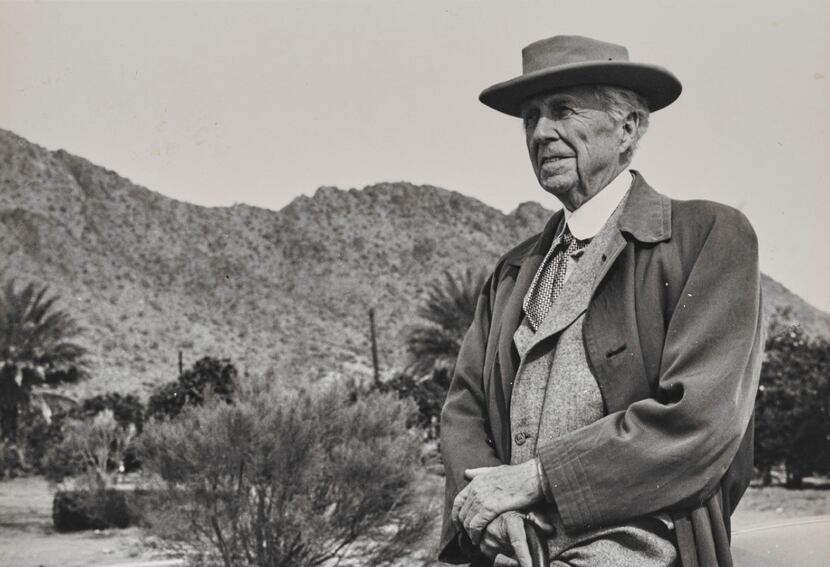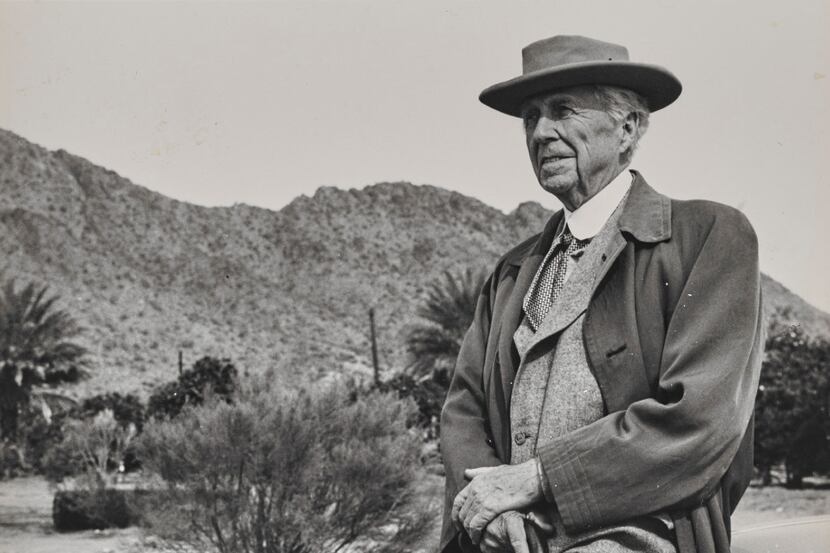NEW YORK, N.Y. — There's more than a bit of irony in the fact that New York City is the site for the exhibition "Frank Lloyd Wright at 150: Unpacking the Archive", running through Oct. 1 at the Museum of Modern Art in Manhattan. The brilliant but cantankerous architect made no secret of his utter distaste for the Big Apple and its glittering skyline.
"It's all a race for rent, and it is a great monument I think to the power of money and greed," he told Mike Wallace in a 1957 TV interview that's part of "Unpacking the Archive," a wide-ranging exhibit of architectural drawings, film clips, models, photos and furniture. "I don't see an idea in the whole thing anywhere, do you? Where is the idea in it? What's the idea?"
The leader of the horizontally focused prairie school style of architecture, Wright (1867-1959) avoided the vertical city whenever possible. New York, in turn, never really embraced him either.
A legacy lives on
In the late 1920s, Wright tried in vain to find funding for St. Mark's Tower, a glass apartment building he designed around a concrete "tap root" without any structural steel. Ninety years later, the only proof left of his innovative design is the newly restored model on display in the MOMA exhibit.

The ultimate insult came in 2013, when owners of a Park Avenue building quietly demolished the Wright-designed Hoffman Auto Showroom (1954) to make space for a bank office, a final confirmation of Wright's quote about the New York state of money and greed.
Despite the architect's frosty relationship with the city and the dearth of his buildings there, Wright's legacy lives on in a handful of New York City locations. After you've seen "Frank Lloyd Wright at 150: Unpacking the Archive," consider visiting these three places designed by America's first "starchitect."
Solomon R. Guggenheim Museum
Wright died six months before the Guggenheim opened in 1959, but his corkscrew-shaped museum went on to become his most famous public building and a landmark of 20th century architecture. Today, it spirals out of the Upper East Side in a bright-white contrast to the trees of Central Park across the street. Yet Wright originally considered painting the exterior in red, orange and pink. When it opened in 1959, it was basic boring beige, not white, we learn in the MOMA exhibit.
No matter what color is on the outside, it's the interior that matters, with its convention-shattering ramp gallery spiraling upward while hugging the edge of the building. Current exhibits include "Visionaries: Creating a Modern Guggenheim," with 170 works by Picasso, Mondrian and Kandinsky and others (through Sept 6), "Mystical Symbolism: The Salon de la Rose+Croix in Paris, 1892-1897" (through Oct. 4) and an exhibit devoted to modernist sculptor Constantin Brancusi (through Jan. 3).
The Solomon R. Guggenheim Museum is at 1071 5th Avenue, between 88th and 89th Street, New York. guggenheim.org.

Frank Lloyd Wright room at the Metropolitan Museum of Art
You can tour more than a dozen Wright-designed homes around the U.S., including his home studio in Oak Park, Ill., and his Fallingwater house in rural Pennsylvania. But the Frank Lloyd Wright Room has the distinction of being the only Wright living room you can see reconstructed inside a museum.
Designed in the 1910s for a house near Lake Minnetonka in suburban Minneapolis, the room is fine example of Wright's early prairie school aesthetic, with its oak trim and flooring, brick fireplace and long, flowing walls filled with geometric windows. In Minnesota, the windows looked out over the gardens belonging to the building's owner, lawyer Francis W. Little. At the Met, the windows have an equally beautiful view of Central Park. Little's daughter decided to demolish the house in 1972, at which point the Met stepped in to purchase it and carefully dismantle the key parts, including the living room and the library, which wound up at the Allentown Art Museum in Pennsylvania.
The Metropolitan Museum of Art is at 1000 5th Ave, between 80th and 84th Street, New York. metmuseum.org.
Crimson Beech in Staten Island
One of only two surviving Wright structures built in New York (the other is the Guggenheim), this 1959 private home exemplifies the architect's career-long dream of creating affordable, mass-produced homes. Not many were actually built.
The L-shaped, single-story Crimson Beech is one of only nine left in Wright's "Pre-Fab #1" series, and its roots can be traced oddly enough to Mike Wallace. Original owners William and Catherine Cass saw Wallace's 1957 TV interview with Wright and were inspired to write to the architect, who worked with the couple on this four-bedroom home. While it's not open for tours, the house can easily be seen from the street by anyone adventurous enough to trek deep inside Staten Island.
Crimson Beech is at 48 Manor Court, Staten Island, New York.
If you go
"Frank Lloyd Wright at 150: Unpacking the Archive" runs through Oct. 1 at the Museum of Modern Art, 11 W. 53rd St., New York. moma.org.
Thor Christensen is a Dallas writer and critic. Contact him at thorchris2@yahoo.com.
